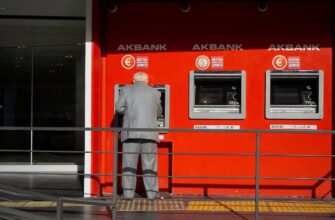## Introduction
In the fast-paced world of cryptocurrency trading, stablecoins like USDT (Tether) and USDC (USD Coin) serve as essential anchors against volatility. For Binance users, choosing between these dollar-pegged giants impacts trading strategies, fees, and risk exposure. This comprehensive guide examines USDT vs USDC on Binance across 10+ critical factors – from liquidity and transparency to regulatory compliance – helping you make informed decisions in the world’s largest crypto exchange.
## What Are USDT and USDC?
USDT (Tether) and USDC (USD Coin) are fiat-collateralized stablecoins pegged 1:1 to the US dollar. They enable traders to:
– Avoid volatility during market swings
– Facilitate faster transactions than traditional banking
– Access crypto markets without constant fiat conversions
**USDT**: Launched in 2014 by Tether Limited, it’s the oldest and most widely adopted stablecoin with $110B+ market cap.
**USDC**: Created in 2018 by Circle and Coinbase, it’s gained traction for its regulatory compliance and monthly attestations, holding a $32B+ market cap.
## Key Differences: USDT vs USDC on Binance
### 1. Issuer Transparency & Audits
– **USDC**: Monthly attestations by top accounting firms (e.g., Deloitte), detailed reserve breakdowns
– **USDT**: Quarterly attestations, historical controversies about reserve backing (now 85%+ cash/cash equivalents)
### 2. Trading Pairs & Liquidity
| Metric | USDT on Binance | USDC on Binance |
|————–|————————–|————————–|
| Trading Pairs| 1,500+ (BTC/USDT, ETH/USDT)| 300+ (BTC/USDC, SOL/USDC)|
| Liquidity | Ultra-high (0.01% spreads)| High (0.02-0.05% spreads)|
### 3. Regulatory Standing
– **USDC**: Fully licensed under US money transmitter laws
– **USDT**: Ongoing scrutiny from NY Attorney General (settled $18.5M fine in 2021)
## Trading Experience: USDT vs USDC on Binance
### Fee Structure Comparison
– **Spot Trading**: Identical 0.1% maker/taker fees for both
– **Withdrawals**:
– USDT: $1 (TRC20), $15-25 (ERC20)
– USDC: $0.80 (TRC20), $1-2 (ERC20)
### Unique Binance Features
1. **USDC Conversion**: Binance auto-converts USDC to BUSD at 1:1 (simplifying liquidity)
2. **USDT Dominance**: Preferred for margin trading and derivatives (90%+ futures volume)
3. **Earn Products**: Both offer 5-10% APY in Binance Savings
## Pros and Cons Breakdown
### USDT Advantages & Drawbacks
**Pros**:
– ✔️ Unmatched liquidity across all pairs
– ✔️ Lower slippage for large orders
– ✔️ Supported by 99% of exchanges
**Cons**:
– ❌ Historical transparency issues
– ❌ Higher ERC20 withdrawal fees
### USDC Advantages & Drawbacks
**Pros**:
– ✔️ Regulatory clarity and audited reserves
– ✔️ Faster USD redemption (1-2 days)
– ✔️ Growing DeFi integration
**Cons**:
– ❌ Fewer trading pairs on Binance
– ❌ Auto-conversion to BUSD may complicate strategies
## Which Stablecoin Should Binance Traders Choose?
– **Day Traders**: USDT for superior liquidity and tighter spreads
– **Long-Term Holders**: USDC for regulatory peace of mind
– **DeFi Users**: USDC for Ethereum ecosystem compatibility
– **Risk-Averse Users**: Split holdings 50/50 for diversification
## Frequently Asked Questions (FAQ)
### Is USDT or USDC safer on Binance?
Both are secure within Binance’s infrastructure. For reserve safety, USDC’s transparent audits give it an edge, though USDT has improved transparency since 2021.
### Why does Binance convert USDC to BUSD?
Binance merges USDC and BUSD liquidity pools to create deeper markets and unified yield products. Converted funds remain 1:1 USD redeemable.
### Can I avoid USDC auto-conversion on Binance?
Yes. Withdraw USDC via non-Ethereum networks (e.g., TRON) or use Binance’s “Convert” feature selectively instead of direct deposits.
### Which has lower withdrawal fees?
USDC generally offers cheaper ERC20 withdrawals ($1-2 vs USDT’s $15-25). TRC20 fees are nearly identical ($0.8-$1).
## Final Verdict
While USDT dominates Binance in trading volume and pair availability, USDC shines in regulatory compliance and transparency. Savvy users leverage both: USDT for active trading efficiency and USDC as a “safety reserve.” Monitor Binance’s evolving stablecoin policies, as auto-conversion features and new listings could shift this dynamic. Ultimately, your choice should align with individual risk tolerance and trading frequency in the ever-changing crypto landscape.








